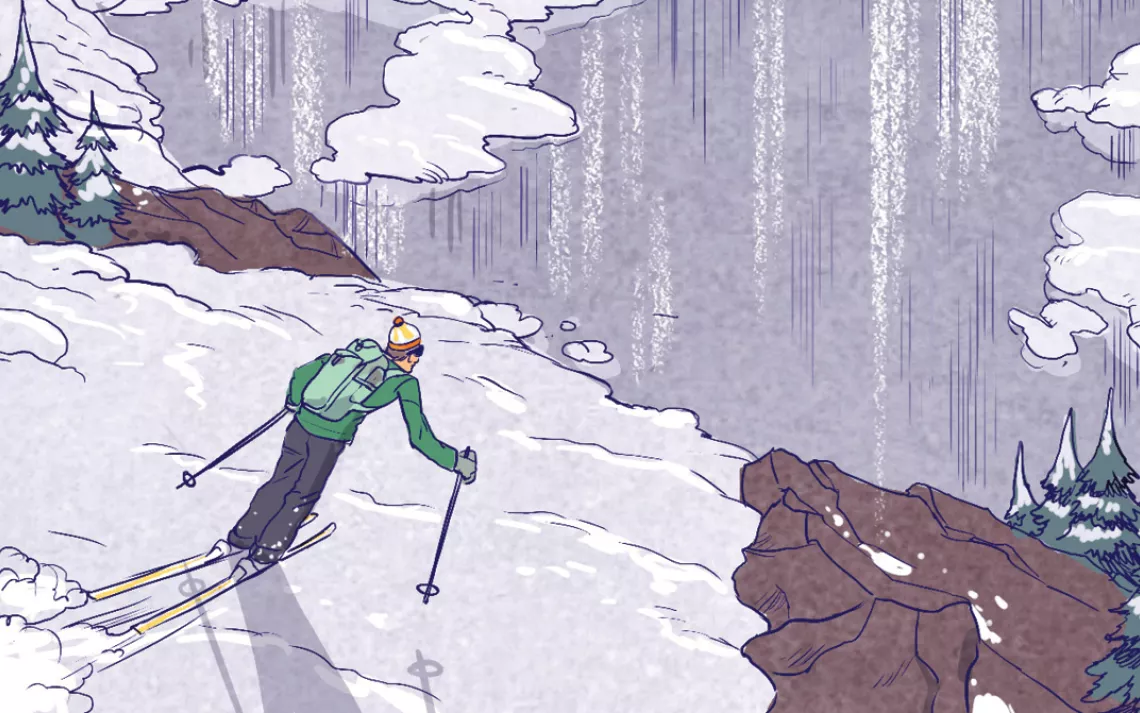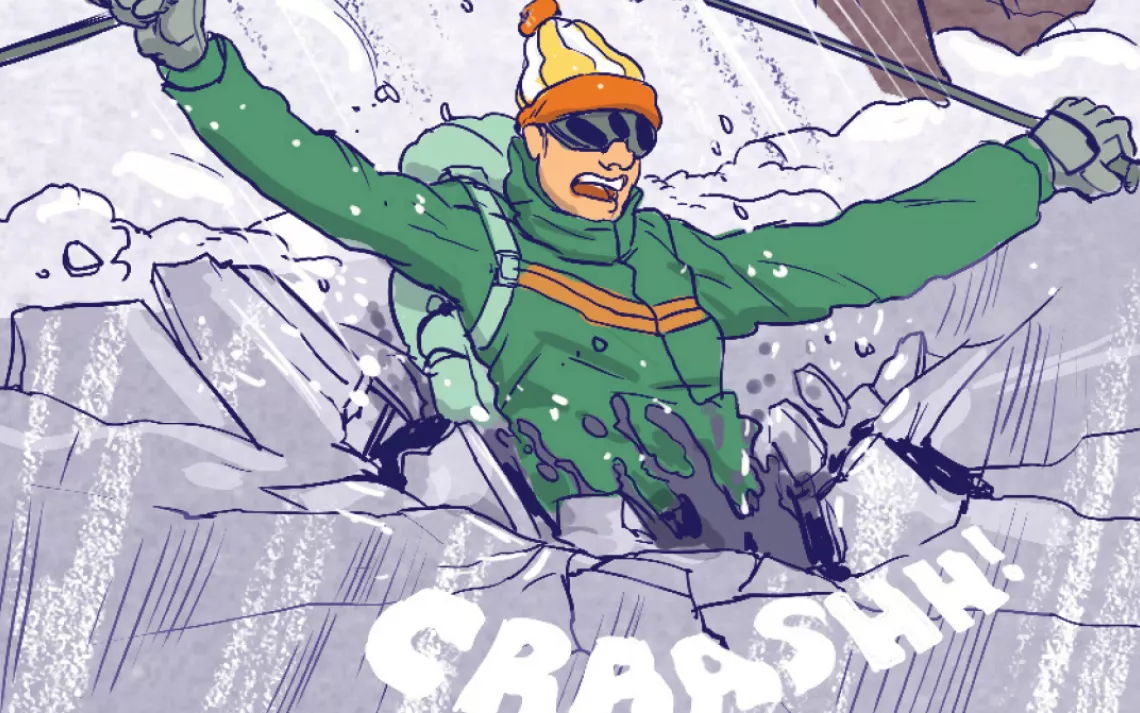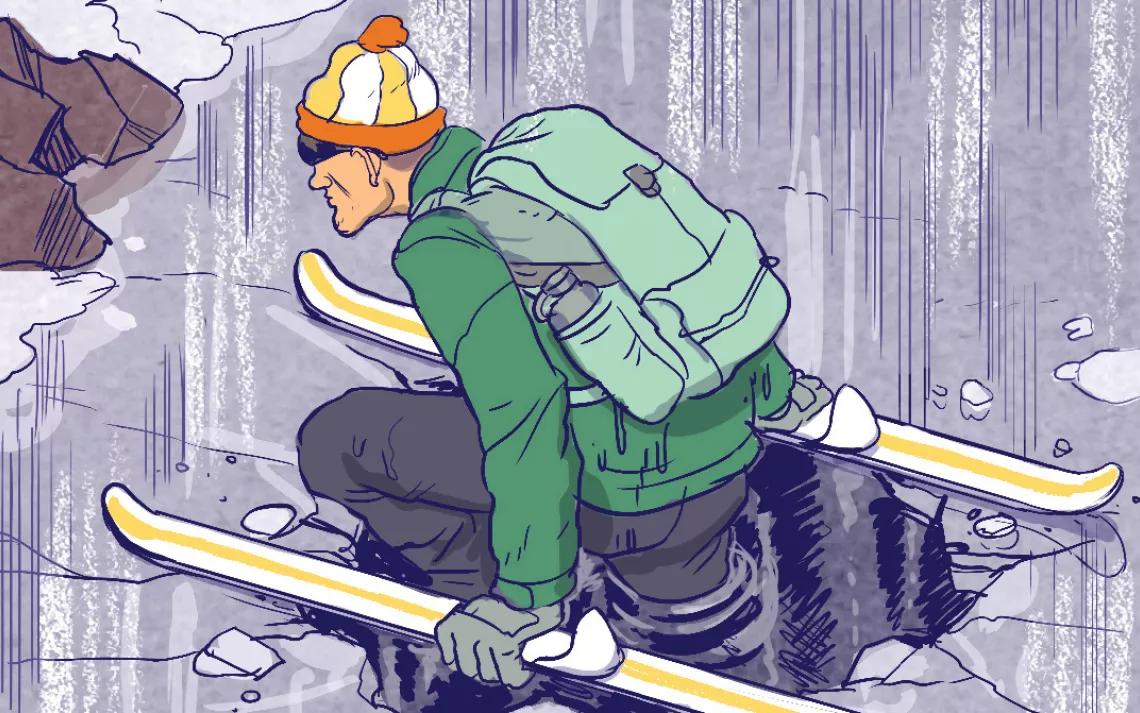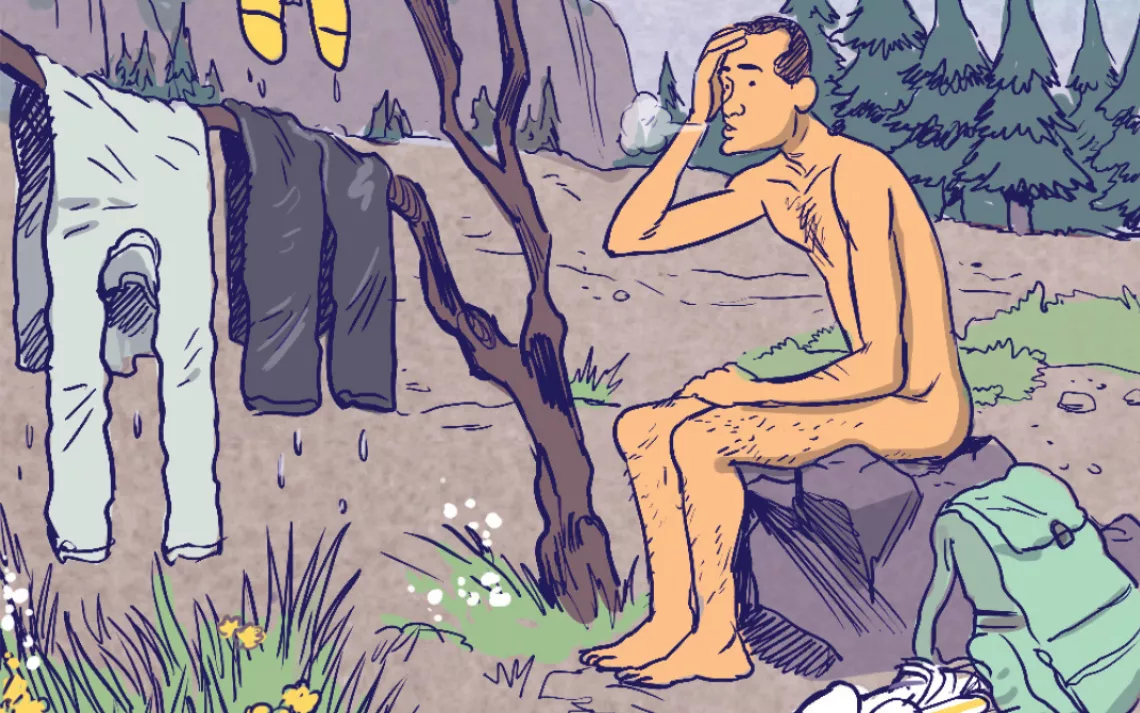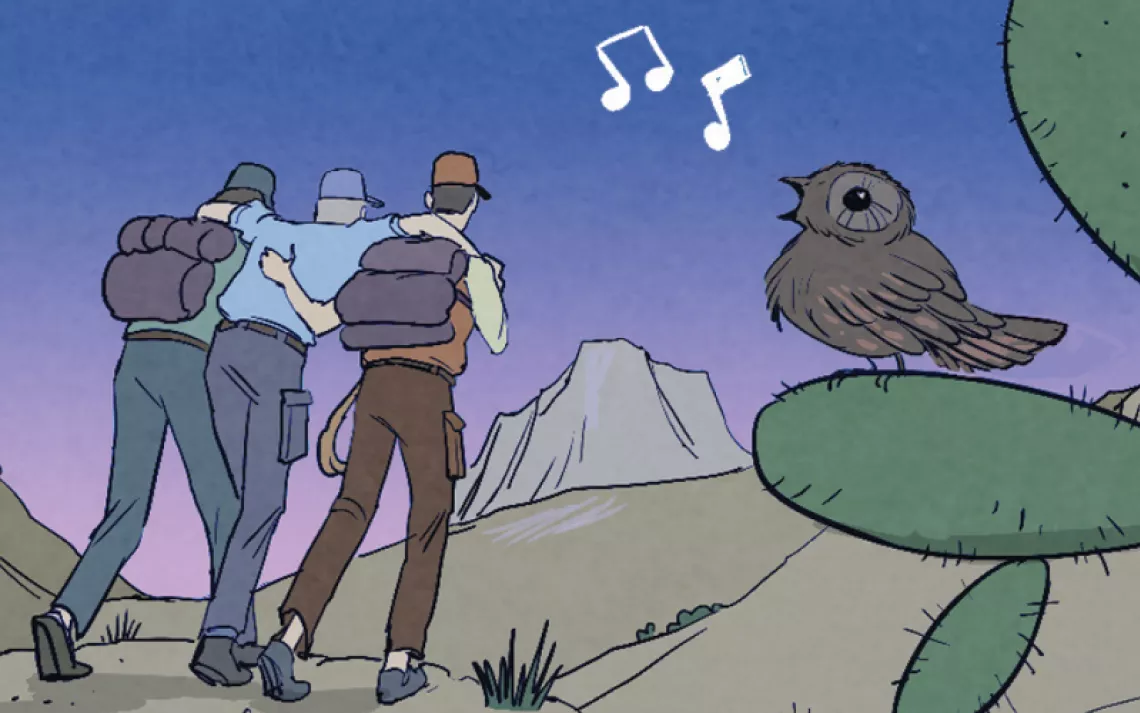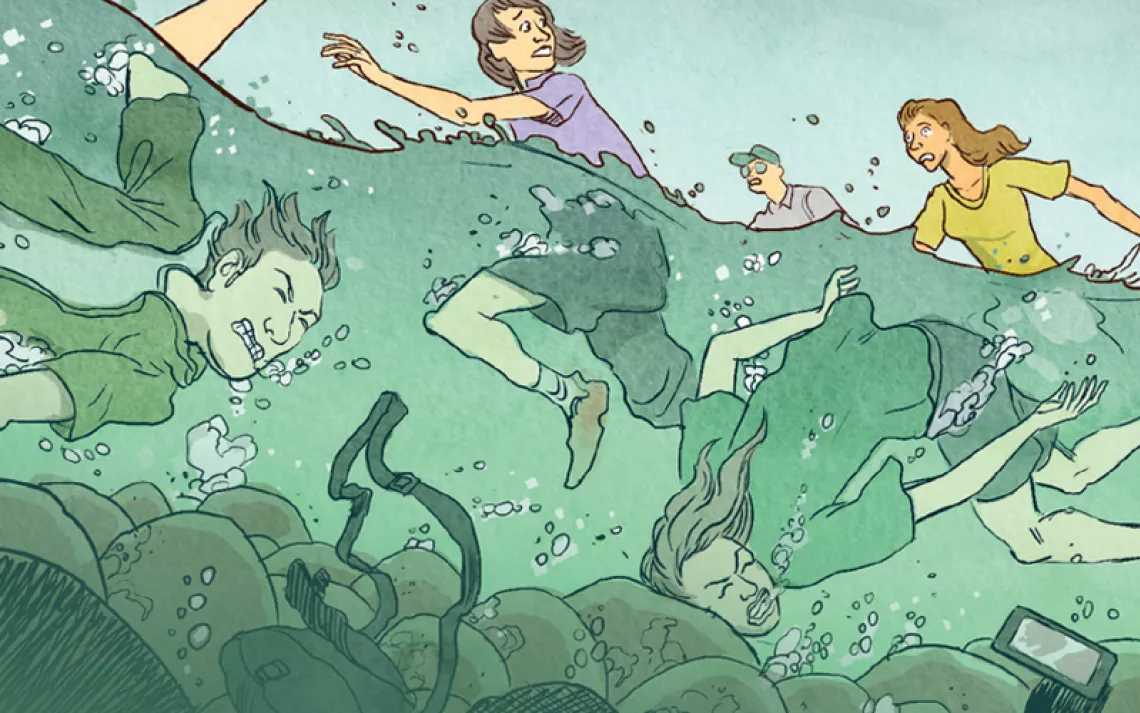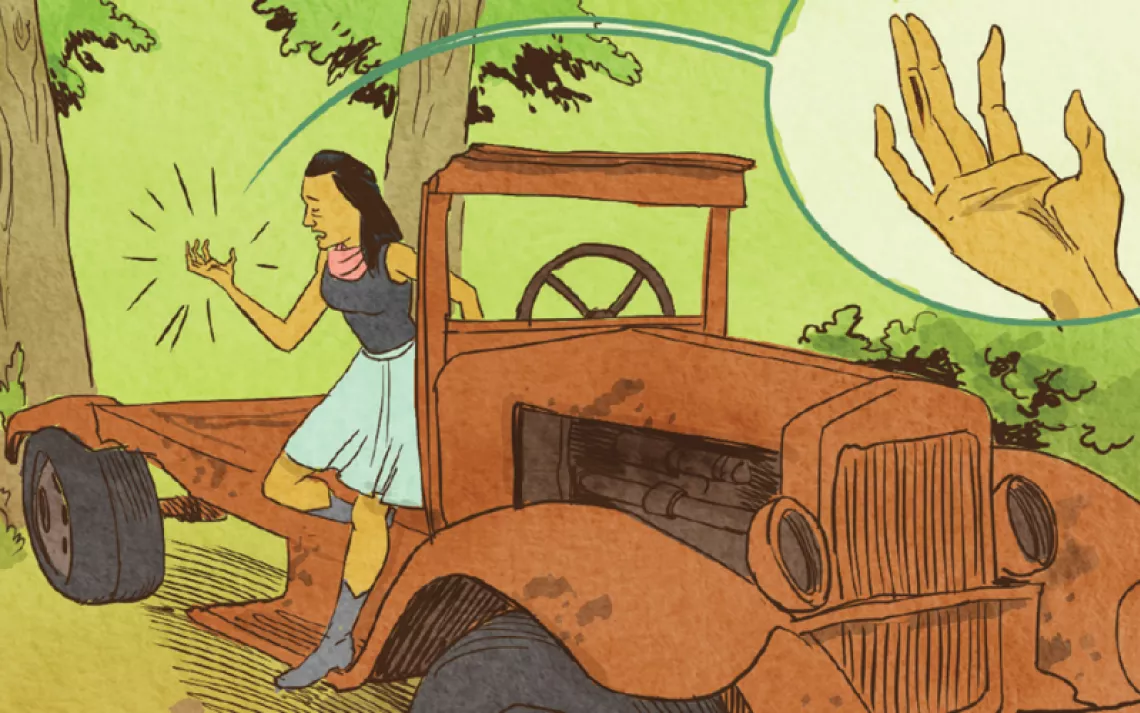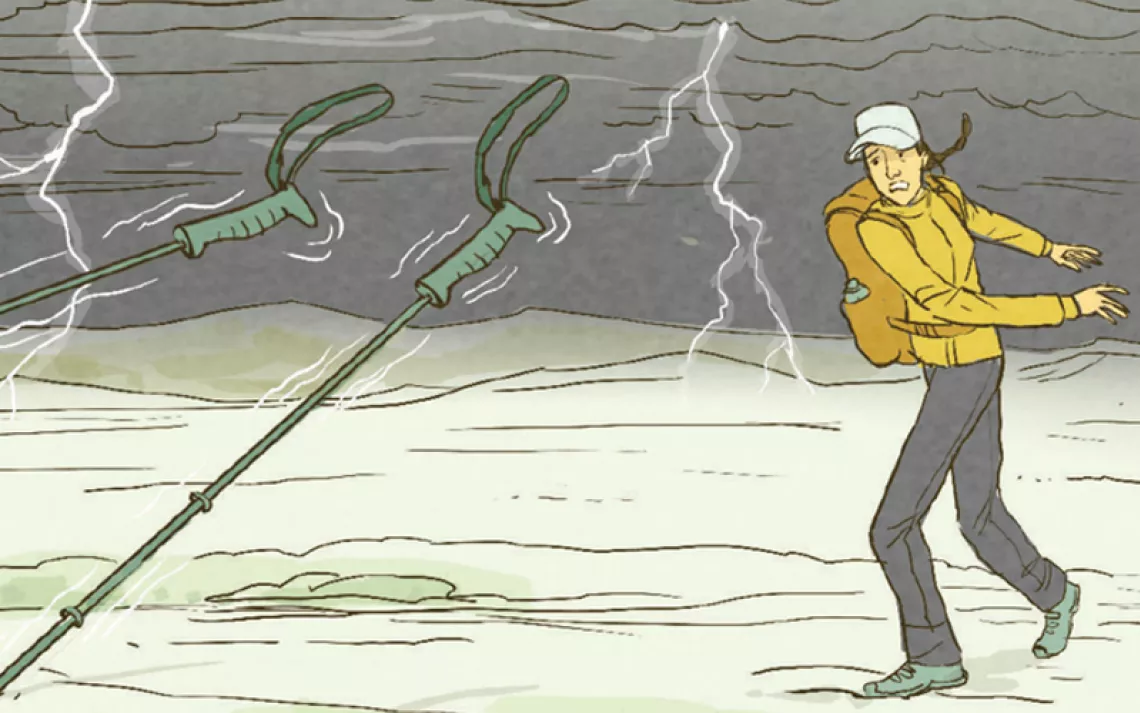Surviving a Fall Through the Ice
I was on a solo backcountry ski tour in Colorado, working toward an American Mountain Guides Association certification. It was early May. The weather was warm and clear, and I slept under the stars. The trip was fantastic—until the third afternoon, when I decided to ski across Snowmass Lake.
This article appeared as "Falling Through" in the November/December 2015 print edition of Sierra.
Ask the Expert
Jason Johnson teaches ice rescue to National Park Service staff in the Great Lakes region.
"No ice is safe, but some frozen surfaces are more dangerous than others. Major red flags are discolored ice, moving water underneath, objects poking through, and cracks or slushy snow on top. If you fall through, first control your breathing, then swim back to the last good ice you stood on and pull yourself out on your stomach using your elbows. Distributing your weight like Donny did is good. Get warm however you can."
 The Magazine of The Sierra Club
The Magazine of The Sierra Club
